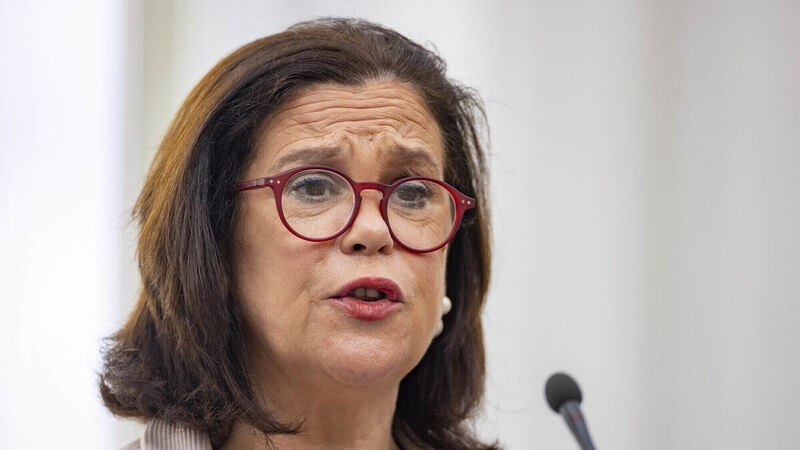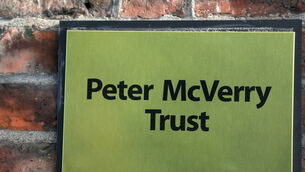Irish Examiner view: New Dáil seats to uproot Irish elections

Mary Lou McDonald's party is expected to run as many as three party members in certain constituencies.
In a little over a week, the Irish political landscape will receive a makeover which may or may not decide the outcome of the next general election here.
On August 30, the Electoral Commission will publish its boundary commission report and it is expected to announce there will be up to 21 new seats in Dáil Éireann in what is expected to be the biggest reform of the Irish electoral system in decades.
The launch of the report is being seen as the start point for the next general election, as political parties regroup, reorganise, and lay down their strategic plans for a vote which could change the political environment for years to come.
With five Fine Gael TDs already having announced they will not stand next time around and several others appearing unsure ahead of a boundary realignment, which could see their support base being moved geographically or obliterated altogether, there is particular concern within the party.
Indeed, throughout Leinster House, the impending arrival of the Electoral Commission report has created a weary cabal of public representatives, worried firstly about their personal futures and secondly about the ability of their parties to take advantage of whatever changes are recommended.
Having badly underestimated the numbers game at the last election and run far too few candidates, Sinn Féin can be expected to rectify that at the next one with as many as three party members standing in certain constituencies. But nothing is guaranteed and if they do not attain the summit they have been climbing towards, then there may be — very unusually for the party — leadership issues.
With no single party having won a majority for over 40 years, the task for Sinn Féin will be immense, while the former Civil War belligerents in Fine Gael and Fianna Fáil will be co-ordinating efforts to ensure they keep the barbarians at the gate.
It is no wonder there is so much angst in Kildare Street right now. Who said this was “silly season”?
It might reasonably be expected that, in a situation where there is a chance of saving lives in a massive emergency crisis, all tools available from manpower to equipment to vital media messaging would be pressed into action straight away.
In Canada right now, British Colombia is under a state of emergency, with 35,000 people under evacuation orders as more than 380 wildfires burn — 150 of which are out of control — and another 236 are burning in the Northwest Territories, with the city of Yellowknife still under threat, despite having been largely evacuated.

The main fire in British Colombia is centred around the city of Kelowna, which has a population of 150,000. Some 300km west of Vancouver, the city is threatened by fast-spreading wildfires and the Canadian armed forces have been called in to help.
Efforts to communicate news of the fires, their locations, and their severity, however, have been seriously disrupted as a result of a ban by Facebook allowing people share links to news organisations. Individuals and communities threatened by the conflagrations, cannot now spread local — and vital — news snippets in their attempts to share details of the fast-changing situation.
Poor mobile phone network coverage across threatened lands has meant people are relying on word of mouth and radio services to try and keep track of the spreading fires and their ability to escape them.
Meta, the technology giant which owns Facebook, last month banned citizens and news organisations in Canada from posting news links because of a row with the federal government over legislation that will require social media companies to pay news publishers for reusing their content.
This petty strop by Meta has now affected thousands of people innocently caught up in a disaster that imperils their lives, the lives of their families, their businesses, their lands, and their properties.
That a company, in an effort to stave off paying monies it should rightfully be liable for anyway, would endanger lives across Canada in the fashion it is, is a sad indictment of the times in which we live.
When San Fransisco announced that it would licence the trialling of driverless cars, there was much anticipation, if not a little fear, about how it would work out.
As we know only too well there is endless scope for accidents involving cars with humans at the controls, but how would things work out when they were automated?
Not so good, is the unsurprising answer. Less than a day after a taxi operated by driverless car operator Cruise collided with a fire truck in the city, the company agreed to a request from state regulators to halve the number of vehicles.
This setback for driverless car operators, including Cruise (owned by General Motors) and Waymo (owned by Google parent company Alphabet), came a week after the California Public Utilities Commission voted to allow the expansion of driverless taxi services.
The state’s Department of Motor Vehicles, which regulates the safety of driverless cars, asked Cruise to halve the number of vehicles it was operating a day after the incident with the fire truck and several days after another got stuck in freshly poured concrete on another city street.
Those incidents came after 10 Cruise vehicles stopped working on a busy street, blocking traffic for 15 minutes after a spike in mobile phone activity. All this came just a week after licences had been granted to allow autonomous vehicles carry passengers. Not a good start, then, for the driverless era in San Francisco.
CLIMATE & SUSTAINABILITY HUB
















